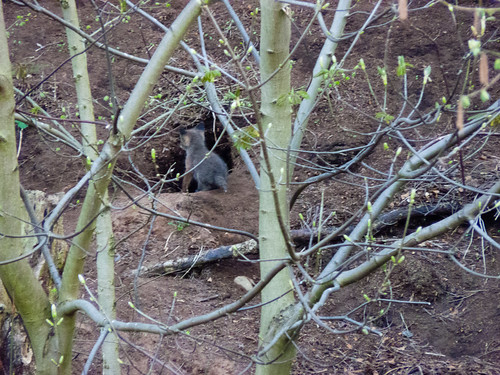This bee was busy collecting nectar from the gorse flowers. The gorse bloom is now well advanced.
Category: David
Categories
Toads mating
Categories
Comma butterfly
Categories
Wood anemones
Categories
Scarlet elf cup fungus
This fox cub is one of the litter which are being raised in the den which I think is a former badger set, featured here.
The cub currently has blue eyes. The fur is predominantly grey, but already shows signs of beginning to turn reddish. The eyes will also soon turn to amber.
The rear view of the same cub (below) shows the darker fur on the ears, and the currently stumpy tail.
This is the largest and boldest of the cubs in the litter, which might have up to seven in total.
Categories
Hawthorn buds and lichens
Categories
Marsh marigolds
Categories
Butterburr
Categories













